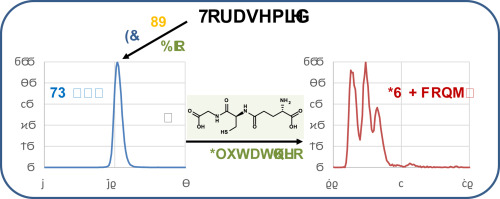当前位置:
X-MOL 学术
›
Water Res.
›
论文详情
Our official English website, www.x-mol.net, welcomes your feedback! (Note: you will need to create a separate account there.)
Abiotic and biotic transformation of torasemide - Occurrence of degradation products in the aquatic environment.
Water Research ( IF 12.8 ) Pub Date : 2020-04-04 , DOI: 10.1016/j.watres.2020.115753 Sascha Lege 1 , Julian Sorwat 1 , Jorge Eduardo Yanez Heras 1 , Christian Zwiener 1
Water Research ( IF 12.8 ) Pub Date : 2020-04-04 , DOI: 10.1016/j.watres.2020.115753 Sascha Lege 1 , Julian Sorwat 1 , Jorge Eduardo Yanez Heras 1 , Christian Zwiener 1
Affiliation

|
The pharmaceutical torasemide is an important loop diuretic and was 2017 one of the ten most prescribed drugs in Germany. Despite its detection in different compartments of the urban water cycle including drinking water, no studies were so far performed to elucidate its fate in the environment and the occurrence of transformation products (TPs). Therefore, we investigated the phototransformation, microbial degradation, transformation with human liver microsomes and anodic oxidation of torasemide to obtain good coverage of environmentally relevant degradation products. Overall sixteen products were identified, covering the following reaction mechanisms: aromatic and aliphatic hydroxylation, including further oxidation to carboxylic acids and quinone imines, amide cleavage, N-dealkylation, N-dearylation, and sulfonamide hydrolysis to sulfonic acids. Especially the formation of quinone imines could be of concern as they are highly reactive electrophiles. Torasemide itself was observed in all investigated wastewater treatment plant (WWTP) samples and wastewater-impacted surface waters. The maximum detected concentration was about 350 ng L-1. Only three of the sixteen transformation products were generally observed in at least one of the samples and the most frequently detected TPs were the human metabolites hydroxytorasemide (TP 364a) and carboxytorasemide (TP 378a). The complete removal of TP 364a during wastewater treatment was in agreement with the results of microbial degradation experiments. TP 364a was most likely transformed into TP 378a, which was microbially less degraded in lab experiments. Based on estimated concentrations, TP 378a could reach about 1 μg L-1 in the investigated wastewater matrices.
中文翻译:

托拉塞米的非生物和生物转化-在水生环境中发生降解产物。
托拉塞米是一种重要的利尿剂,是2017年德国十大处方药之一。尽管在包括饮用水在内的城市水循环的不同隔间中都检测到了它,但迄今为止尚未进行任何研究来阐明其在环境中的命运以及转化产物(TPs)的发生。因此,我们研究了光转化,微生物降解,人肝微粒体转化以及托拉塞米的阳极氧化,以获得与环境相关的降解产物的良好覆盖率。共鉴定出十六种产物,涵盖以下反应机理:芳香族和脂肪族羟基化,包括进一步氧化为羧酸和醌亚胺,酰胺裂解,N-脱烷基,N-脱芳基和磺酰胺水解为磺酸。尤其是醌亚胺的形成可能是值得关注的,因为它们是高度反应性的亲电子试剂。在所有调查的废水处理厂(WWTP)样品和受废水影响的地表水中均观察到了Torasemide本身。检测到的最大浓度约为350 ng L-1。在至少一个样品中,通常只观察到十六种转化产物中的三种,而最常检测到的TP是人类代谢产物羟化酶(TP 364a)和羧化酶(TP 378a)。废水处理过程中TP 364a的完全去除与微生物降解实验的结果一致。TP 364a最有可能转化为TP 378a,而在实验室实验中,TP 378a的降解程度较小。根据估计的浓度,
更新日期:2020-04-06
中文翻译:

托拉塞米的非生物和生物转化-在水生环境中发生降解产物。
托拉塞米是一种重要的利尿剂,是2017年德国十大处方药之一。尽管在包括饮用水在内的城市水循环的不同隔间中都检测到了它,但迄今为止尚未进行任何研究来阐明其在环境中的命运以及转化产物(TPs)的发生。因此,我们研究了光转化,微生物降解,人肝微粒体转化以及托拉塞米的阳极氧化,以获得与环境相关的降解产物的良好覆盖率。共鉴定出十六种产物,涵盖以下反应机理:芳香族和脂肪族羟基化,包括进一步氧化为羧酸和醌亚胺,酰胺裂解,N-脱烷基,N-脱芳基和磺酰胺水解为磺酸。尤其是醌亚胺的形成可能是值得关注的,因为它们是高度反应性的亲电子试剂。在所有调查的废水处理厂(WWTP)样品和受废水影响的地表水中均观察到了Torasemide本身。检测到的最大浓度约为350 ng L-1。在至少一个样品中,通常只观察到十六种转化产物中的三种,而最常检测到的TP是人类代谢产物羟化酶(TP 364a)和羧化酶(TP 378a)。废水处理过程中TP 364a的完全去除与微生物降解实验的结果一致。TP 364a最有可能转化为TP 378a,而在实验室实验中,TP 378a的降解程度较小。根据估计的浓度,


























 京公网安备 11010802027423号
京公网安备 11010802027423号